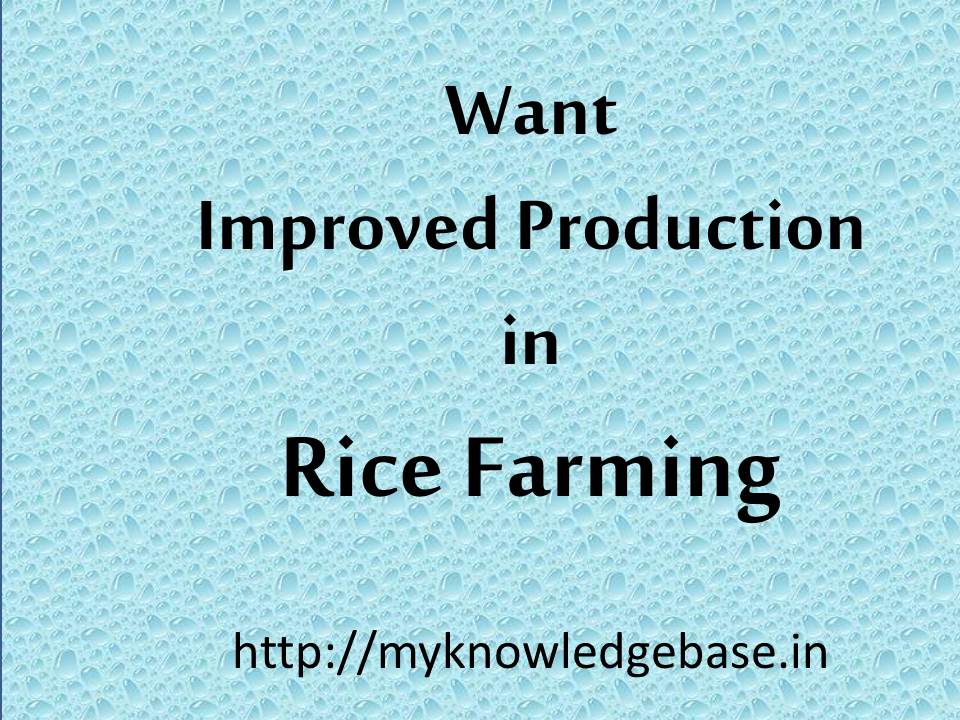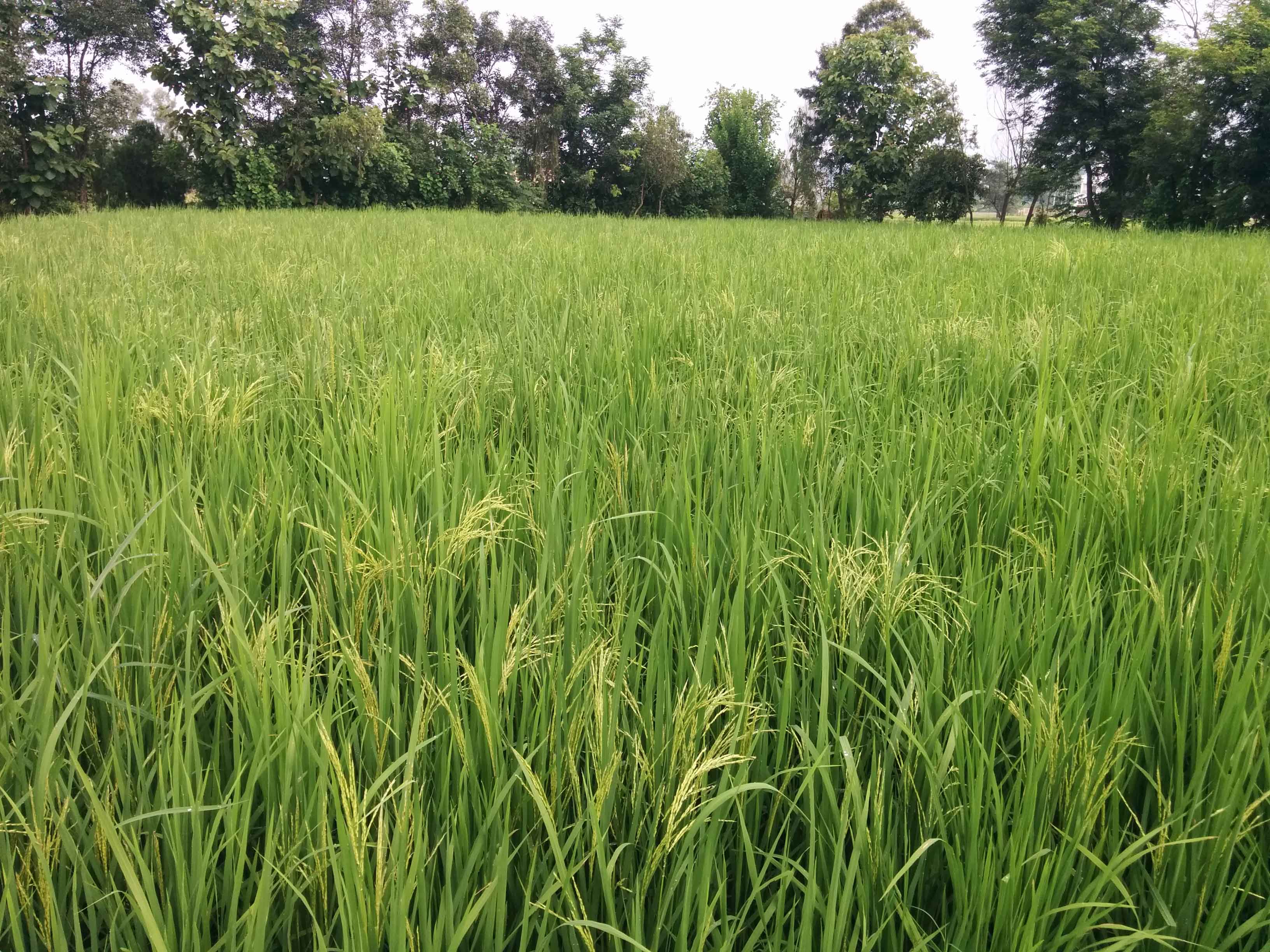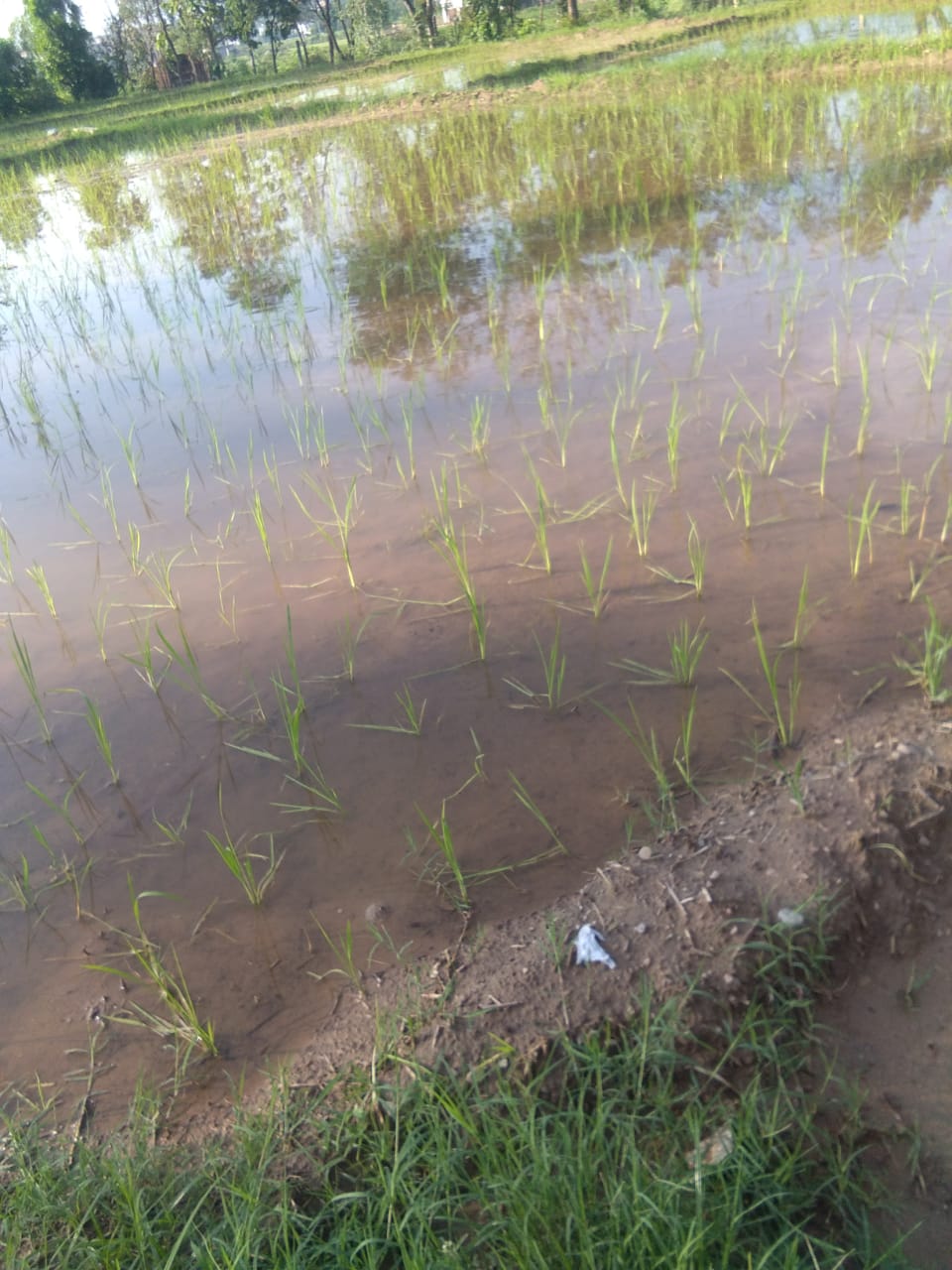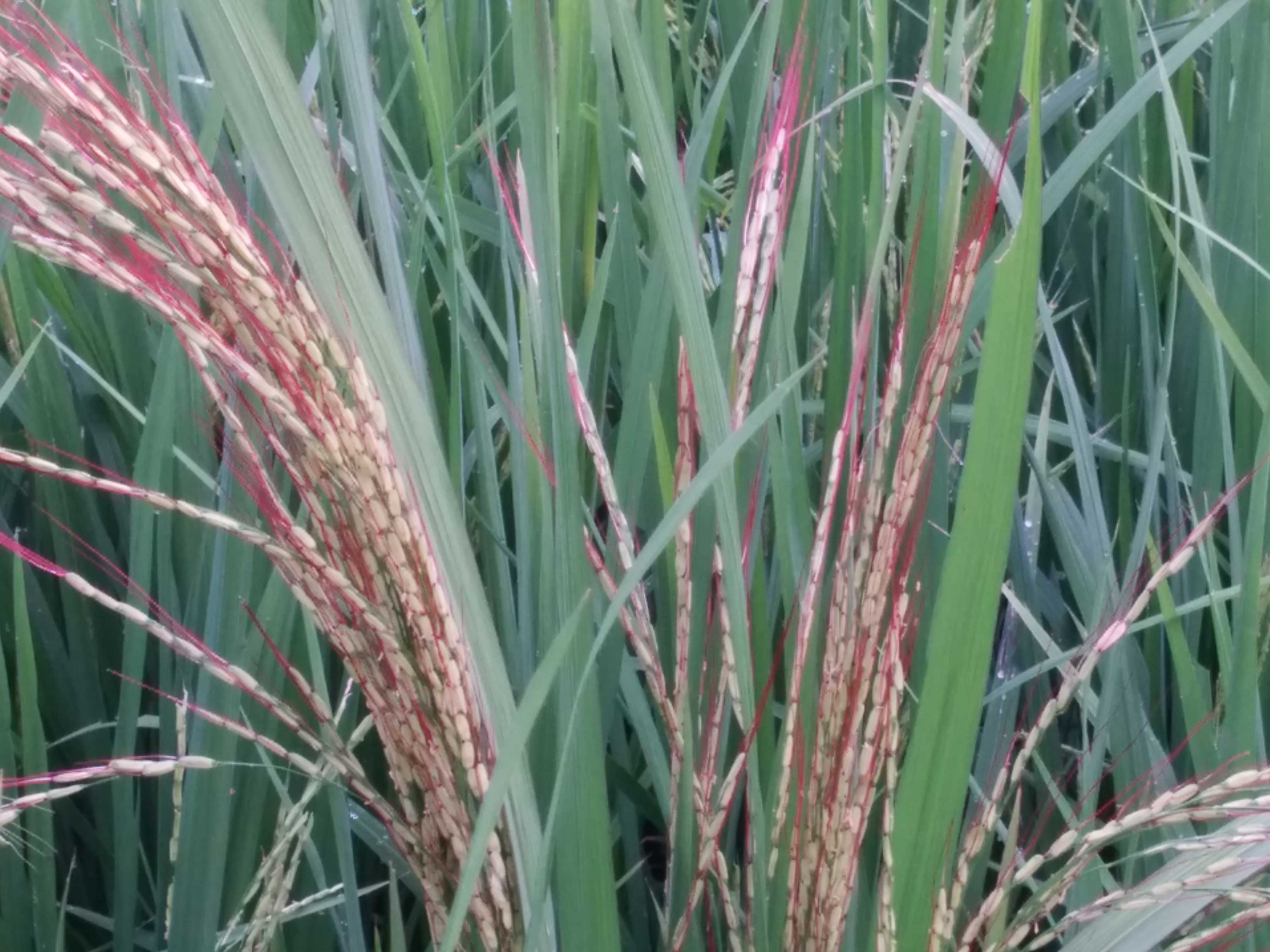Introduction
Rice is believed to have been cultivated in the regions of the Fertile Crescent around 9600 Before Common Era (BCE). By 6500 BCE it seems to have reached Greece, Cyprus and India. By 3000 BCE it reached British Isles and a millennium later China. (Source: Wikipedia)
Rice is a staple cereal for a large population worldwide especially in India, China, Japan, Indonesia, Bangladesh, Thailand etc. It is difficult to believe of a large number of human sustenance without Rice. China is the leading producer of Rice followed by India.
Rice or Paddy cultivation is labor intensive and needs a lot of water. Therefore it is most suitable and indeed adapted by regions where labor is cheaper and water availability is in plenty. However, Rice can be grown practically anywhere, even on a steep hill or mountain area with the use of water-controlling terrace systems.
In the West, parts of America and certain regions of Europe, such as Italy and Spain, have the climate suitable for Rice.
It is the agricultural commodity with the third-highest worldwide production (Rice, 741.5 million tonnes in 2014), after Sugarcane (1.9 billion tonnes) and Maize (1.0 billion tonnes). Rice is an important source of carbohydrates, protein, nutrients and fiber and providing more than one-fifth of the calories consumed worldwide by humans.
This from https://en.wikipedia.org/wiki/Rice
First used in English in the middle of the 13th century, the word “Rice” derives from the Old French ris, which comes from the Italian riso, in turn from the Latin oriza, which derives from the Greek ὄρυζα (oruza). The Greek word is the source of all European words (cf. Welsh reis, German Reis, Lithuanian ryžiai, Serbo-Croatian riža, Polish ryż, Dutch rijst, Hungarian rizs, Romanian orez, Spanish arroz).
The origin of the Greek word is unclear. It is sometimes held to be from the Tamil word (arisi), or rather Old Tamil arici. However, Krishnamurti disagrees with the notion that Old Tamil arici is the source of the Greek term, and proposes that it was borrowed from descendants of Proto-Dravidian *wariñci instead. Mayrhofer suggests that the immediate source of the Greek word is to be sought in Old Iranian words of the types *vrīz- or *vrinj- (Source of the modern Persian word Berenj), but these are ultimately traced back to Indo-Aryan (as in Sanskrit vrīhí-). P. T. Srinivasa Iyengar assumed that the Sanskrit vrīhí- is derived from the Tamil arici, while Ferdinand Kittel derived it from the Dravidian root variki.
Description of Rice
Rice is husked out of paddy. So I could have named this blog as on Paddy growing. Paddy is an annual grass. It has round culms, flat leaves and terminal panicles. Rice is the seed of a grass variety called Oryza sativa and Oryza glaberrima. Paddy plant can grow up to 6 feet tall. It has a round jointed stem with leaves being long and pointed. The edible seeds which are sold commercially as ‘Rice’ grow on the top in the form of separate stalks. This is called paddy as the seeds are covered with a brown colored husk. The paddy is then harvested and dehusked resulting in production of Rice. Rice fields are also called as paddy fields.
Classification of RICE
Rice is named differently in different places. Whatever the names, classification methods for Rice varieties follow same standards:
- Growing season – winter grown or summer grown.
- Protein content. High, Medium or Low.
- The quality of the Rice protein gluten. This protein can determine the suitability of Rice for a particular use.
- Grain color – red, white or amber. Phenolic compounds present in the bran layer impart color to Rice grains.
Top RICE producers in 2014
| Country | millions of tonnes |
| European Union | 157.3 |
| China | 126.2 |
| India | 95.8 |
| Russia | 59.7 |
| United States | 55.1 |
| France | 39.0 |
| Canada | 29.3 |
| Germany | 27.8 |
| Pakistan | 26.0 |
| Australia | 25.3 |
| Ukraine | 24.1 |
| World | 720 |
| Source: UN Food & Agriculture Organization |
Suitable climate for RICE growing
Rice plant prefer moderate temperature in summer as well as in winter. Short days are not favorable for the formation of bulbs. Winter Rice lies dormant during winter and grows rapidly in spring. Too cold conditions damage the crop. Spring Rice is sown just as spring starts and harvested in summer. Winter Rice makes for fine flour.
Due to the peculiarity of the weather required, Rice sometimes can be grown all year round in certain regions. Otherwise there is one season for Rice growing when there is high rainfall, bright long days and temperatures not very high. In India sowing time is June-July and harvesting during November-December. Rice is also cultivated during sowing period of November to February and harvested during March to June. However as said before different regions would have different sowing and harvesting periods depending on local rain and temperature and sunlight available. Farmers may please check with their local agriculture authorities.
Land Preparation
No special attribute of soil is required for Rice plantation, but it grows best in well-drained loam or clay-loam soils. Plantation can be done in almost any type of soil provided the region has high rainfall, humidity and temperature with long bright days. Rice adapts both to acidic and alkaline soils.
The Rice roots penetrate earth at shallow depths maybe around 6-7 cm. Land needs to be well pulverized. For this land maybe first irrigated and then ploughed two or three times. The seed and initial fertilizers (and if required pesticides and fungicides, depending on the soil) are then planted together. Thereafter one ploughing and one leveling are done so that there are no water drainage problems. This also eliminates any other type of vegetation in the field.
Rice requires huge amounts of water. It is estimated that for every one kilogram of Rice, farmer needs to put in about 1500 liters of water.
Sowing Methods
Method one: Transplanting
The first step in this method is to prepare seedlings in raised nursery beds.
While the seedlings are coming up, prepared land is flooded and empties two or three times. This will remove any weeds from the field. It also enhances water retention capacity of the field. All the Potash, Phosphate and half of Nitrogen is applied in the beginning.
The seedlings can be planted in the field, from where water has been emptied, in two ways. The first is random method where seedlings would be planted without a definite spacing in between plants. The second method is planting in rows according to defined distance and spacing. The distance and spacing depends on the variety of Rice, season and soil fertility. For example Rice variety growing too tall height would require greater spacing compared to medium or small height. Machine Trans planters facilitate such planting. With row plantations weeding and fertilization become easily controlled.
After planting water may be kept around 1-2 cm for a few days. As the plants lengthen, increase water level to 5-10 cm and remain there. The field is to be drained about 7 to 10 days prior to harvesting.
Method two: Direct seeding
There are three methods of direct seeding:
- Broadcasting
- Drilling
- Dibbling
Broadcasting
Farmer may need to plough the land more than one time to get good tilth and well pulverized land. All of Phosphorous and Potash and half of Nitrogen should be mixed in the soil beforehand.
It is estimated that per hectare, one would require around 70 to 100 kgs of Rice seeds. Broadcasting is done uniformly or in shallow furrows made in the in the field with the help of a furrower.
Drilling
In this method machine, with or without power, punches holes in the field and seeds are dropped in such holes. The land is leveled after seeding.
Dibbling
Practiced more in hill plantations on mountain slopes or wherever plowing and harrowing is difficult. A pole is used at the end of which is a scoop. A person would use this to dig holes and drop the seed and cover the soil.
Let us compare the two methods:
- Direct seeding by whichever method requires less labor and less cost. In fact plants would mature around a week earlier than if transplanted.
- Transplanting allows field to be weed free and also retains moisture for Rice growing.
- In direct seeding seeds can be harmed by insects, birds, rodents etc. weeds and Rice compete with each other for growth.
- Direct seeding requires more seeds per hectare than the Transplanting method.
Manures and Fertilizers
Fertilizer application actually depends upon the soil of the farmer. It is recommended to have the soil and water analyzed before deciding on the actual quantity of fertilizers. As a normal practice the following fertilizers are indicated for Rice farming.
Farm Yard Manure – Mixing of around 2 to 2.5 tonnes of FYM per hectares is sufficient. Apart from FYM, it is also recommended to give following fertilizers.
Nitrogen (N) @80 – 120 kg/ha, Phosphorus (P2O5) @ 40- 60 kg/ha and Potash (K2O) @ 40 kg/ha. Apply Zinc Sulphate 25 kg per ha.
Weed Management
Weed management is an important activity in Rice growing. Weeds compete with Rice plants for sunlight and growth and fertilizers. It is necessary to have proper weed control for a healthy growth of Rice plants.
In Transplant method, plough and harrowing kills a lot of weeds. Thereafter submerging in water also destroys a large part of weeds.
In Dry seeding methods weeds also grow alongside rice plants. Weed control may start after one week with use of herbicides like glyphosate or by light manual cultivation. In later stage, spraying of herbicides like fenoxaprop _ ethoxysulfuron, bentazon etc. is also advisable. The spray should be kept pointing downwards.
Control of Pests and Diseases
As with any other crop, Rice plantation is also prone to many diseases and pests. Sizeable loss is caused to farmers because of such attacks.
Preventive Measures
- Clean equipment and field during sowing seasons.
- Use Resistant variety of seeds.
- Keep up sowing with your neighbors.
- Over application of fertilization should be avoided.
- Delay Pesticide application till plants are firmly growing
Control of pests and diseases using inorganic compounds:
Pests:
Rice is infected by a very large number of pests; some important and prominent ones are Stem Borers, Nematode, Thrips, Leafhopper, Hispa, Leaf Folder, Mealy Bug and Caterpillar. Depending on the pest, use of Phorate, Imidaclorprid, Cartap, Fipronil, Chlorpyriphos, M-45 Spray, etc. in recommended dosages.
Diseases:
Important diseases are Leaf Blast, Neck Blast, Brown Spot, Discoloration, Bacterial Blight. Again recommended dosages of Carbendazim, Tricyclazole, Mancozeb M-45, good fertilization etc. would help in combating the diseases.
Health Benefits of Rice
- Rice has a number of health benefits for the mankind. It provides instant energy (lots of carbohydrates), good for blood sugar levels, slows down the aging process. It also improves bowel movement as a lot of fiber is present in Rice grain. Vitamin B1 in unprocessed Rice is good for human. It is also said to regulate digestion and given in cases of dysentery and chronic diseases. It is gluten free and prevents obesity.
- Rice is also used in cosmetics such as facial cleansers and moisturizers.
- Brown Rice has more fiber and protein and vitamins of B group than the processed white Rice.
- Research has shown that Rice eating is recommended for Irritable Bowel Syndrome (IBS) (World Journal of Gastroenterology, 2018).
- There are some opinions that Rice produced with biotechnology methods could be made to have high iron and zinc compounds through bio fortification for better health benefits to mankind.
Nutrition
Example: Nutrition in Rice, white variety, cooked 100gm
| Nutrient | Value |
| Water (g) | 68.44 |
| Energy (kcal) | 130 |
| Protein (g) | 2.69 |
| Total lipid (g) | 0.28 |
| Carbohydrate (g) | 28.17 |
| Fiber (g) | 0.4 |
| Sugars (g) | 0.05 |
| Calcium (mg) | 10 |
| Iron (mg) | 1.2 |
| Magnesium (mg) | 12 |
| Phosphorous (mg) | 43 |
| Sodium (mg) | 1 |
| Zinc (mg) | 0.49 |
| Thiamine (mg) | 0.16 |
| Source: USDA |
Nutrient content of Rice depends on a number of factors.
- Rice strain e.g. white, brown, red, and black (or purple) varieties having different prevalence across world regions.
- Nutrient quality of the soil Rice is grown in,
- Rice is polished or processed,
- Manner it is enriched and how it is prepared before consumption.
Harvesting
Harvesting of Rice to get Paddy consists of steps as below:
- Reaping: the matured plant consisting of panicles and straw is cut.
- Threshing: in this activity, farmer threshes the reaped out plant to separate the paddy grain from the rest of cut crop.
- Field drying: of the cut crop in the field exposed to sun for drying out.
- Stacking: storing of the harvested crop in stacks or piles
The following steps to properly harvest the crop are recommended before actually doing harvesting:
- Harvest at right moisture content. Time the harvest.
- Harvesting too early results in lower yield as there are immature or unfilled grains.
- Harvesting too late may result in losses and increased breakage in Rice.
- Harvesting also affects the germination potential of seed.
- Harvesting time generally indicated as 110-120 days after sowing for direct seeded Rice and 100-110 days after transplantation. However other factors like variety, moisture content, and number of days after heading may also be taken into account.
- Threshing may be undertaken immediately after Reaping to avoid need for rewetting.
Harvesting systems:
- Manual methods for both Reaping and Threshing.
- Reap manually and do threshing by portable or small stationary Thresher.
- In large holdings Combiner Machine is utilized to carry out all steps of harvesting.
Milling Process to get Rice from Paddy
Milling is done after paddy production. In the Milling process husk and bran layers are removed from the paddy which produces what is termed as white Rice. Depending on milling system, the Rice so produced can undergo further processing such as polishing and enrichment.
As a rule of thumb milling process results in around 65-70% percent Rice, 20% husk and about 10% bran. Total white Rice would consist of whole Rice and broken Rice. This depends on the milling machines and their operators.
The best quality Rice will be attained if the quality of paddy is good and the Rice is milled properly.
For good milling practice, farmer needs to pay attention to following:
- Pre-clean paddy before husking.
- Ensure correct moisture content during milling (app 14%).
- Different varieties of Rice are not mixed prior to milling
Storage
Storage of Rice, as of any other food, requires protection from adverse weather, moisture, rodents, birds, insects and fungi. It is better to store Rice in paddy form which provides some protection against insects. However Rice form requires lesser space for storing and may be preferred as such. Rice can be stored in jute or plastic bags, can be hermetically stored, and can be stored in farm in large quantities. Containers and zipped plastic bags are also available for storing. Rice absorbs moisture and if stored in moist conditions could germinate in storage.
For further information:
http://www.knowledgebank.irri.org https://www.haifa-group.com
Note: The author himself is a small farmer and involved with such farming. Certain data are taken from usually reliable sources on the net.




I see you don’t monetize myknowledgebase.in, don’t waste your traffic, you can earn additional bucks every month with new monetization method.
This is the best adsense alternative for any type of website (they approve all websites), for more info
simply search in gooogle: murgrabia’s tools
why, thank you for your advice. grteful.
Good information on paddy cultivation, rice and its importance.
Direct seeding of paddy over transplanting in a very fertile land has some disadvantage and risk. E.g. excess of paddy sown in drum seeding leading to over population and associated risk.
Thank you Mr. Ramachandra for your observations and advice on this article. I have mentioned some risks in my article for the direct seeding plantation method.
In the direct seeding method when how much fertilizer used for paddy field plz answer me.
In broadcasting the same rule of apply whole of potash and phosphate and half of nitrogen applies. Please refer to relevant section about quantity. But the dose is including your soil water analysis tests. In dibbling it is possible to save on fertilizers by limiting same to the hole prepared for seeds. You may usefully also go through any information in your area agriculture office for that particular region. Very thankful for your comment.